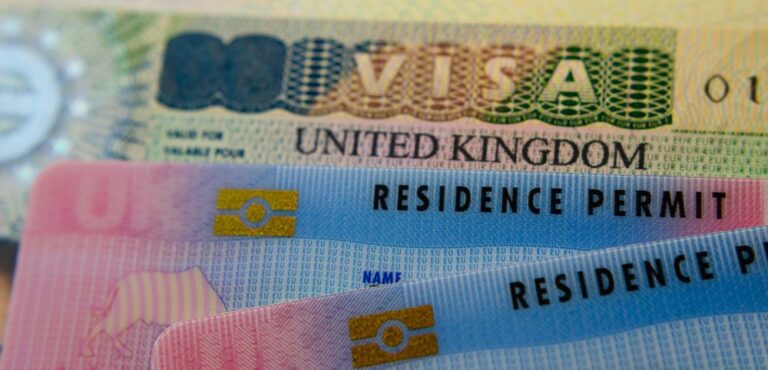How to get RD tax relief for a startup?

12.05.2022
Any UK business owner who understands the tax system is a great asset; start-ups may drastically boost their chances of success by claiming the different tax reliefs and incentives available.
Taxable profits are reduced by business costs. A company’s turnover may be £1 million, but it is not the amount on which it pays corporation tax. Expenditure on research and development activities (“R&D”) can provide an enhanced reduction in taxable profits or it can provide for a payment from HMRC in the event you are loss making or not sufficiently profitable to need the full reduction in taxable profits (and therefore corporation tax).
If you wish to take advantage of the benefits, you can’t ignore your R&D expenditure since relief must be claimed within two years of the accounting year in which the expenditure occurred, otherwise the relief / repayment would be lost.
WHAT DO I QUALIFY FOR?
To begin, figure out what kind of relief or repayment you could be eligible for. This is determined by the size of your business. Your company comfortably qualifies for the (greater) relief for small and medium sized enterprises (“SME”s) as opposed to the credit for larger companies.
The test to qualify as an SME is:
- Do you have fewer than 500 staff; and
- Do you have a turnover of 100 million Euros or less; or
- Do you have a balance sheet of 86 million Euros or less.
At least one of the last two requirements must be satisfied in addition to the first. All three components are easily satisfied by the vast majority of relatively new start-ups.
WHAT IS MEANT BY “RESEARCH”?
The law on what is considered research refers to accounting standards but is also further restricted by the requirements of the Department for Business, Energy and Industrial Strategy (“BEIS”) whose requirements carry the force of law. FRS102 defines research as “Original and planned investigation undertaken with the prospect of gaining new scientific or technical knowledge and understanding”.
As an example, you are able to claim against the full cost of the new developer you have hired while they are working full time on new tech, but you cannot claim for the entirety of the salary costs of the support person.
This qualifying person is an example of someone carrying out qualifying “indirect” activities (i.e activities that aren’t directly related to the R&D) and it would also include other indirect supporting activities such as clerical, personnel and finance activities, so far as they directly relate to the R&D. The cost of your time spent hiring the new developer also counts (for example).
You can also claim for the cost of materials employed provided you don’t go on to sell the products made and you can claim for the utilities used in the research (which may be a proportion of a wider bill, for example a single electricity bill for the business might be apportioned 60% to those carrying out qualifying activities and 40% to others). You can also for example, claim for the studies you carry out but you cannot claim for capital expenditure such as acquiring a property.
WHAT HAPPENS IF WE DISCOVER IT DOESN’T WORK?
For research to qualify, it does not have to be successful; knowledge can still be advanced by understanding what does not work. There needs to be some innovation for a cost to gain relief though, as opposed to repeating an existing process (unless that process is not public knowledge, for example a trade secret).
DOES OUR DEVELOPMENT HAVE TO BE ENTIRELY UNIQUE?
Relief is generally not available if you are copying another’s available research. However if no one has tried to do it your way, your claim should satisfy the requirements (despite the end result being the same as what others may already have achieved in a different way). Whether something classifies as sufficiently different to existing processes can sometimes be unclear.
Following another’s design but painting your product red instead of blue would not count as innovation. The project must seek to achieve an advance in knowledge or capability in the field of research. Activities must directly contribute through resolving uncertainty.
IS THERE ANY WAY TO GET CERTAINTY OUR PROJECT QUALIFIES?
HMRC operates a clearance procedure for small companies (fewer than 50 staff and under £2m turnover). These are submitted through the Government Gateway and the system will guide you as to what enclosures are required.
WHAT IS R&D WORTH TO A COMPANY?
When certain costs of your company qualify for enhanced relief, you begin to wonder about the value of this relief. Remember, it doesn’t matter if you haven’t yet started to trade, relief is available if you intend to trade eventually. (It also does not matter if your hired developer is not in the UK for some time as there is no geographical restriction.)
For example, if instead of offsetting 100% of your costs as is normal, you are able to offset more, you can recover up to 50% of your qualifying costs through a claim. Making the R&D claim has saved you an additional money in corporation tax compared to if you did not know to make the claim.
For example, if your business incurs £200,000 of qualifying expense and instead of offsetting 100% of the costs, you offset 240%, you can potentially reduce your taxable profits by £200,000 x 2.4 = £480,000. At today’s corporation tax rate of 19% that could save £91,200 in corporation tax. That is almost 46%of your qualifying costs are recovered through a claim.
WHAT IF WE HAVE NO PROFITS TO REDUCE?
You realise you don’t have any taxable profits to offset however, it could be some time before you have close to half a million of profits to offset and it would be very helpful to get some financial support now. You can claim a payment equal to 14.5% of your qualifying expenditure multiplied by 240%. This equates to £200,000 x 2.4 x 0.145 = £69,600. This is purposefully less than the benefit of offsetting against taxable profits, forcing a decision. A choice is required, would you rather be paid £70,035 when filing your corporation tax return, or wait to become profitable and reduce your tax bill by £91,200?
You consider your capital requirements and the cost of funding and decide it would be better to receive a smaller payment sooner. Summarising the effect, you can claim a repayment equal to 33.35% of your expenditure, or a tax credit equal to 43.7% of your expenditure. Note the rates fluctuate regularly and this might soon be out of date.
WHAT DO I TELL MY ACCOUNTANTS?
You inform your accountants about your research and development expenses. Your accountants will require your assistance in determining what may be claimed. They do not know what your employees are doing. You ask them to make sure a repayment is claimed in your CT600 corporation tax return and work with them to complete an accurate and full R&D report to accompany the return. In case the report is absent, HMRC opens an enquiry regarding it. HMRC aims to make payment within 28 days of receiving a claim, so you should receive your repayment quite quickly.
NEED MORE INFORMATION ABOUT R&D?
HMRC has produced a full guide for startups in plain English, that can be found here.
Remember, R&D relief is a company relief. Sole traders or partnerships cannot take advantage of it.







